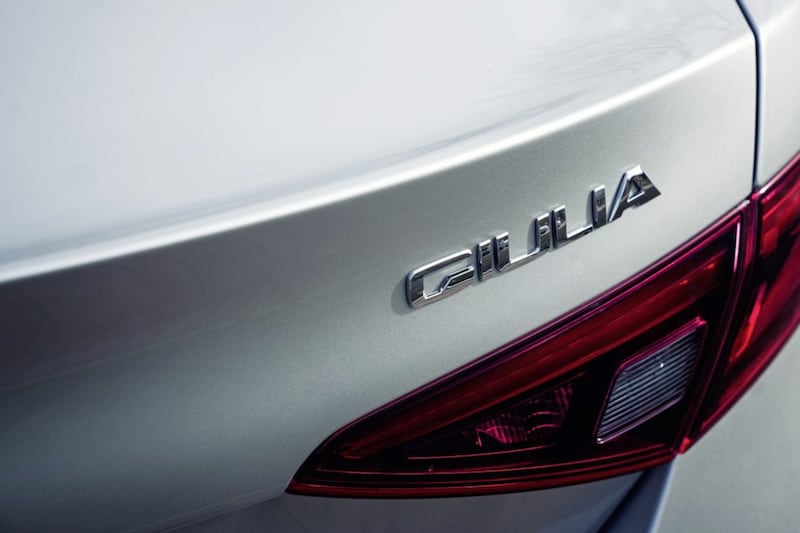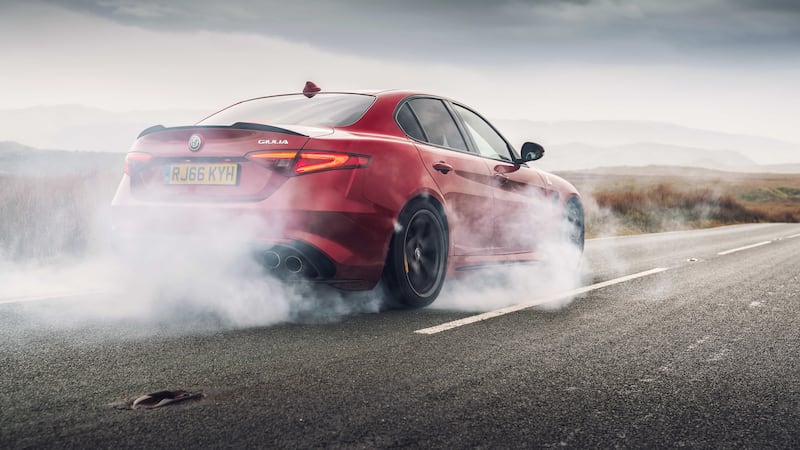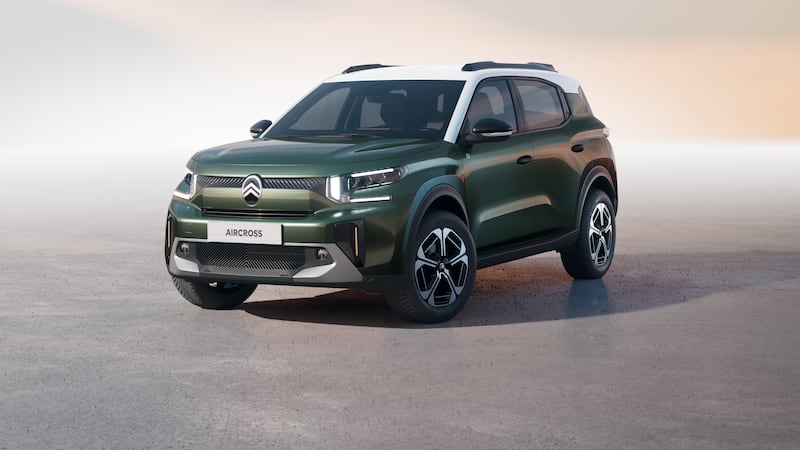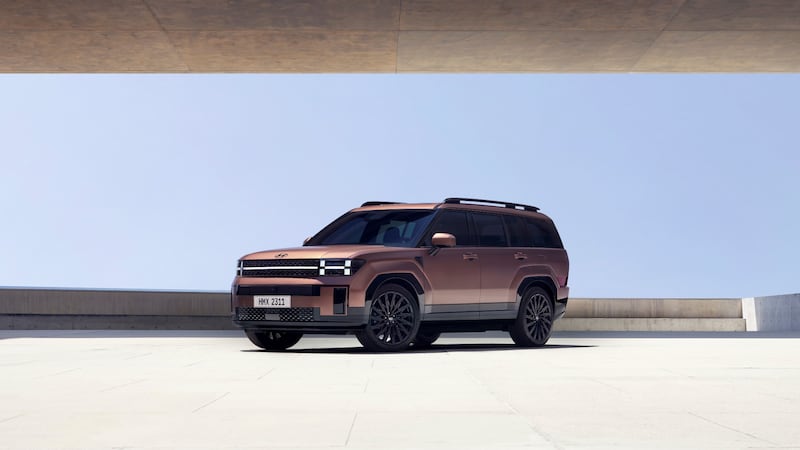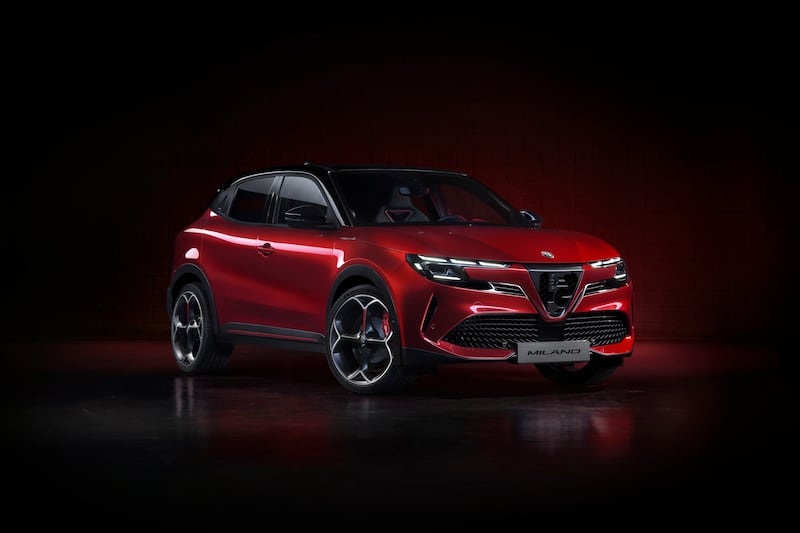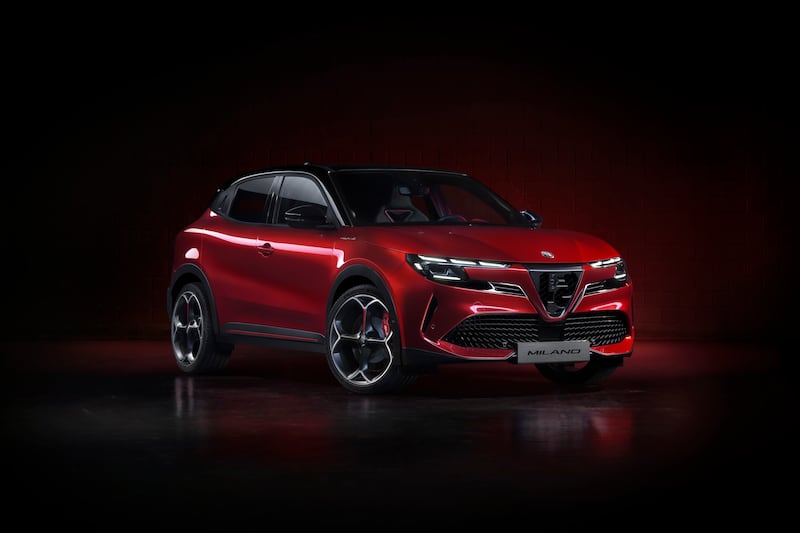RARELY has a new car been more heavily laden with expectation, at least among enthusiasts, than the Alfa Romeo Giulia, writes William Scholes.
Alfa Romeo is among the most storied and evocative marques in the car world.
One of the Milan-based company's cars carried Giuseppe Farina to the inaugural Formula One drivers' championship in 1950, a feat it repeated the following year with Juan Manuel Fangio.
Alfa Romeo cars routinely won fabled road races like the Mille Miglia and Targa Florio.
Later, models like the Spider roadster and the Alfasud cemented Alfa's reputation as a maker of sporty and fun-to-drive cars, sold at a price attainable to the average buyer, unlike exotica from Ferrari and Maserati.
Outstanding engines, such as its fabled V6 petrol unit, and stylish design have remained Alfa hallmarks, but it is fair to say that the company's many achievements have, of late, felt a little 'back catalogue'.
A small and lacklustre model range and false dawns have been the story of Alfa Romeo's recent history under Fiat ownership.
And while Alfa, like the rest of the industry, might have shaken off the rust bucket reputation that it acquired - justifiably - in the 1970s, convincing would-be buyers that its cars are no longer reliably unreliable has been a harder sell.
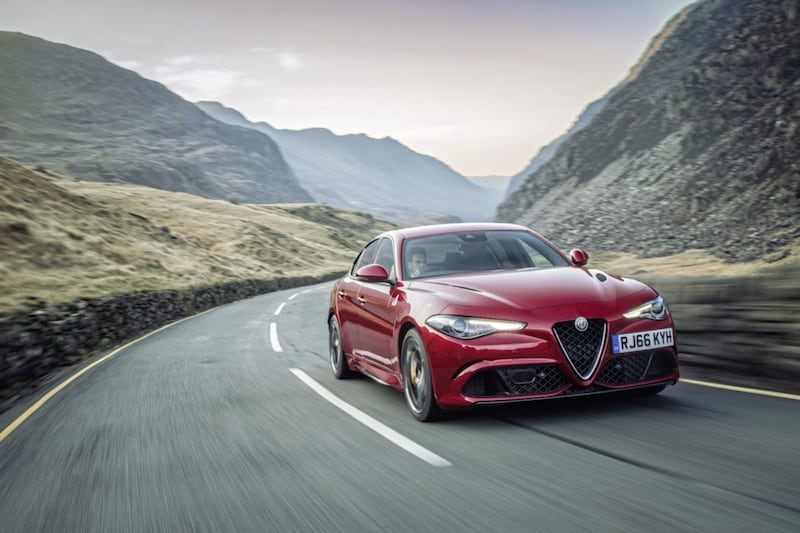
All this means that when it comes to Alfa Romeo, drivers fall in to two groups.
In the first are those for whom the motorsport pedigree, fizzy driving dynamics and stylish design will be compelling enough to persuade them to actually buy an Alfa Romeo; in the other, are those who are put off by the reliability doubts and for whom the motorsport success is either irrelevant or so far back that it means nothing to them.
Alfa Romeo's problem has been that the number of people in the former category is far outweighed by those in the latter.
It needs to tip those scales decisively in its favour if it is to grow from being essentially a boutique manufacturer to a genuine alternative to the German premium brands from which it wishes to steal sales.
This is what makes the Giulia - a clean-sheet, bespoke design - such an important car for Alfa Romeo's latest renaissance.
The rear-wheel-drive Giulia marks a return to the sports saloon sector, a class dominated by the truly formidable German trio of the BMW 3 Series, Audi A4 and Mercedes-Benz C-Class.
The Alfascenti have been crying out for a car like the Giulia since the 159 disappeared from showrooms in 2012, but it isn't really them that Alfa Romeo needs to worry about.
Rather, it needs to appeal to buyers who won't put up with or appreciated the quirks and idiosyncrasies that have characterised earlier Alfas.
It also needs to deliver the sort of driving experience and quality that has thus far eluded the warmed over Fiat underpinnings that have seen service in recent Alfa Romeo models.
Your average 3 Series, A4 and C-Class owner - or, perhaps more pertinently, the companies who put them on their lease schemes - can be relied upon to offer a cooler assessment than someone who already goes weak at the knees at the sight of rosso corsa paintwork and has Selenia engine oil coursing through their veins.
The Giulia gives you an idea of how a four-door sports saloon would look if it was dressed by Giorgio Armani or Ermenegildo Zegna. In comparison, the ubiquitous 3 Series/A4/C-Class look like they've been togged out by Lidl
How then, if you remove the emotion from the potential purchase of an Alfa Romeo and treat it as a box with wheels to get you from A to B, does the Giulia measure up?
First, because it won't take very long, we will tackle the debit column.
The seatbelts aren't height adjustable, which is a pain, and the infotainment system isn't as slick - the screen is smaller and the menus less intuitive - as you will find in one of the German executive cars.
The hazard warning lights activate too readily under even moderately hard braking.
The indicators on most cars can be cancelled if you flick the stalk in the direction they are already flashing. It is a foolproof system.
However, in the Giulia you have to flick the stalk in the opposite direction, setting off the occasional confusing bout of left-right-left-right indicators.
In last week's on-off heavy showers of rain, the automatic wipers couldn't decide what speed they needed to work at too clear the screen.
The stop-start system on the diesel Giulia I drove restarted the engine with an unseemly jolt, well at odds with the car's premium ambitions.
Although four-wheel-drive and manual gearboxes are available in other markets, in Northern Ireland you can only order a Giulia with rear-wheel-drive and an eight-speed automatic gearbox. Nor is the engine choice as vast as that offered by the German marques.
And while the boot is just as large as you will find in any of the German cars - and bigger than that of the generally undercooked Jaguar XE - its opening seems quite narrow.
Individually, these might seem like very minor complaints but taken together they can also be daily irritations.
The reason I've listed them is because BMW, Audi and Mercedes simply get this sort of ease-of-use stuff spot on, and it shows just how high the Germans have set the bar for excellence in this class of car.
But all is not lost for Alfa Romeo. It would be a shame if you were not prepared to overlook the niggles, because the credit column is generously endowed to such a degree that, in my view, the Giulia goes straight to the top of the class.
For a start, it looks fabulous. The Giulia gives you an idea of how a four-door sports saloon would look if it was dressed by Giorgio Armani or Ermenegildo Zegna. In comparison, the ubiquitous 3 Series/A4/C-Class look like they've been togged out by Lidl.
Then, it has a more dramatic and interesting interior than the German rivals.
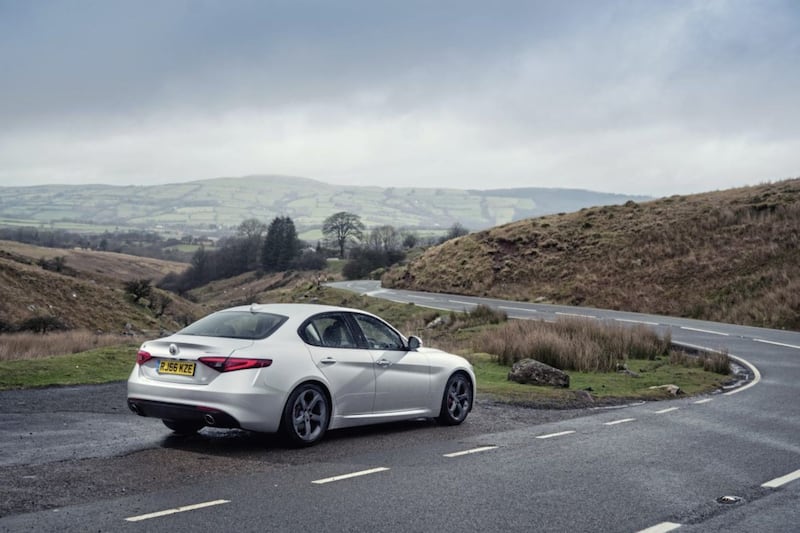
The click of the dials and switches might not be as sub-millimetric precise as that of an Audi, but the Giulia feels robust enough.
The plump sports seats - trimmed in sumptuous red leather on the Speciale trim Giulia that I drove - are comfortable and help set the tone for a car that signals it was built around the driver.
I was able to find a perfect driving position and while the steering wheel rim is a pleasure to hold, it is the gearshift paddles which really tell you that the Giulia is a driver's car.
Cool to the touch, long, slender and beautifully crafted fillets of aluminium which sprout from both sides of the steering wheel, they have a beautifully tactile click-clack action and make the apologetic plastic wheel-mounted items found on every other car feel decidedly low-rent.
The paddles - standard on the Veloce and stonking Quadrifoglio models and a sensible £275 option on other models - tell you much about Alfa Romeo's priorities.
Sure, the temperature dial might not operate with the Bang & Olufsen precision of that in an Audi, but then neither the Audi nor any of the other German cars have gearshift paddles straight out of a Ferrari.
Still, the paddles would be nothing more than a gimmick if the drivetrain they were connected to and the chassis they interacted with were as uncommunicative as the Italian postal service.
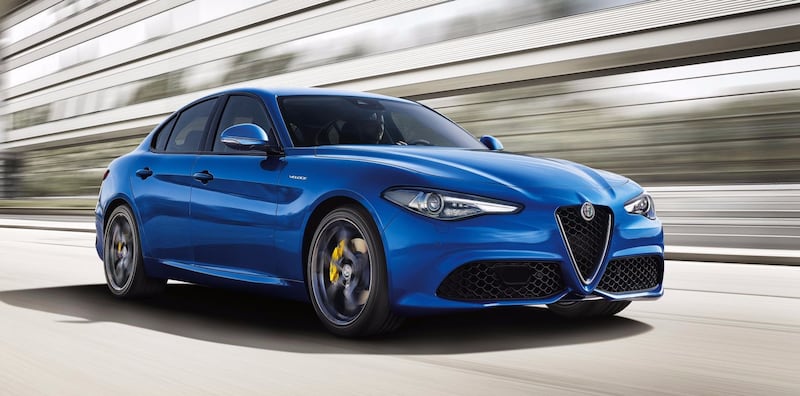
Happily, this is a brilliant car to drive. You can tell it is going to be very good before you have got half a mile up the road, and brilliant by the time you have got home.
The engine in the diesel version I drove was good enough but it was the quality of the gearchange and the smoothness with which it went about its business that impressed.
Throttle response was very good for a car of this sort. This is far from a given these days as eco-tuning tends to blunt a car's responsiveness to accelerator inputs - the Jaguar XE is particularly afflicted by this - but the Giulia has been designed to respond to your inputs, aided by a gearbox which changes cleanly and promptly.
But it is the chassis, in particular the quality of the ride, that really sets the Giulia apart from its rivals.
It manages the trick of being able to glide, unruffled, over characteristically pockmarked and inconsistently surfaced Northern Ireland roads yet not be all soft and marshmallowy in corners.
Body control and the suspension's damping is excellent, and it is a combination that allows the Giulia to both cosset but also feel like a proper sports saloon when you want to lean on the rear axle's ample grip and enjoy the quick steering.
There are cars which can do one or the other, but few which can do both; in this regard, the Alfa Romeo feels rather like a rear-wheel-drive Mazda - which is praise indeed from this writer...
It means the Giulia responds quickly and consistently to what you ask of it which, when it boils down to it, is what an enthusiast driver demands and appreciates from any car, whatever its size, price or ultimate speed.
'Ultimate speed' brings us to a fleeting mention of the top-of-the-range Giulia, the Quadrifoglio, an evocative name woven deep into Alfa Romeo's racing DNA thanks to the four-leaf clover emblem which was first painted on one of its cars in 1923 as a good luck charm.
There are probably better ways of spending £60k, but it's difficult to think of any right now; the Guilia Quadrifoglio is eerily good
In 2017, Quadrifoglio on your Giulia means a 2.9-litre Ferrari-derived turbocharged V6 engine with more than 500bhp, the ability to complete the 0-62mph sprint in 3.9 seconds and a potential top speed of 191mph, accompanied by a soundtrack of exhaust pops and squealing tyres.
There are probably better ways of spending £60k, but it's difficult to think of any right now; this car is eerily good.
Everything about the 'regular' diesel Giulia applies here, except it has been turned up to 11. The engine, as you would hope, is stratospherically good, but, once again, it is the ride that deeply impresses.
My time in the Quadrifoglio was, admittedly, short, but the last time I was in something as potent but which also had such thoroughly sorted suspension it wore a Porsche badge and had its engine slung out the back.
Numbers-wise, a BMW M3, Audi RS5 or Mercedes-AMG C63 might be as quick - though they are electronically limited to 155mph... - but the Alfa Romeo's ride quality is in a different league.
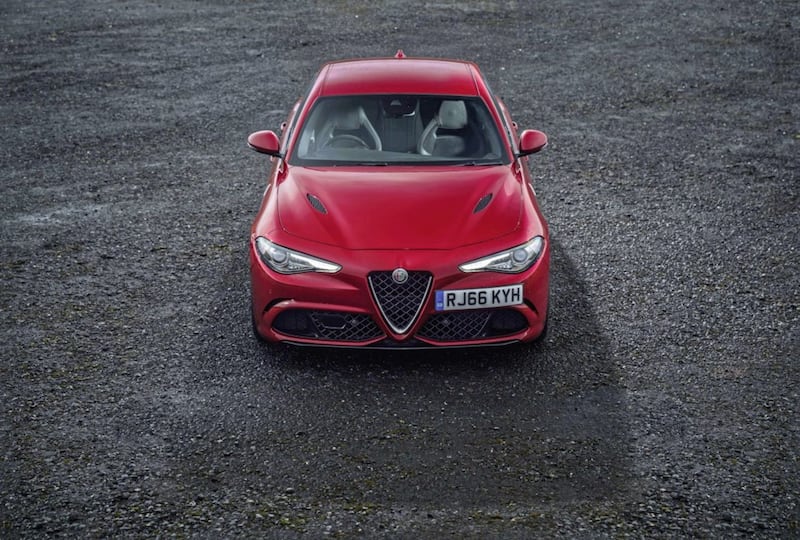
This allows it to use more of its power, more often, and also gives the driver huge confidence and understanding of what the car is doing underneath them. Cars as fast as the Giulia Quadrifoglio can, perversely, often feel rather numb, but the Alfa Romeo feels alive and communicative at even a relaxed canter.
Conventional wisdom in the car industry is to design the ordinary model first and then, later, work out how to make the fast version work. Alfa Romeo turned this logic on its head with the Giulia; the Quadrifoglio came first, and then they worked out how to make the regular diesel and petrol cars.
This 'backward engineering' approach has worked really well, and explains why the 2.2-litre diesel in its attitude and responsiveness feels so close to the Quadrifoglio - far more so than, say, a BMW 320d does compared to an M3.
The Giulia is easily the most complete car Alfa Romeo has built in decades. Better still, it is a match for the German executive sport saloons - no mean feat - and is where my notional £30-£40k would go if I in the market for a car of this sort.
Most importantly of all, perhaps, is the fact that, at last, Alfa Romeo has built a car that you no longer need to make excuses for. The Giulia is a proper Alfa Romeo, and a true driver's car.
AT A GLANCE
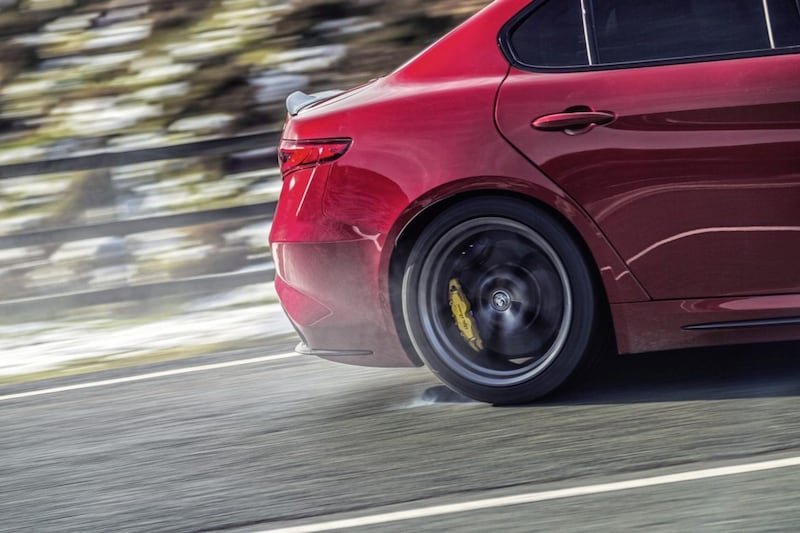
Alfa Romeo Giulia Quadrofoglio
Price: £61,595
Engine and transmission: 2.9-litre V6 petrol turbo, rear-wheel-drive, eight-speed automatic gearbox; 503bhp, 443lb.ft
Performance: Top speed 191mph, 0-62mph in 3.9 seconds
Fuel consumption and CO2: 34.4mpg (EU combined), 189g/km
Car tax: £800 in first year, then £450 annually
Benefit in kind: 36 per cent
Euro Ncap safety rating: Five stars (98/81/69/60), 2016
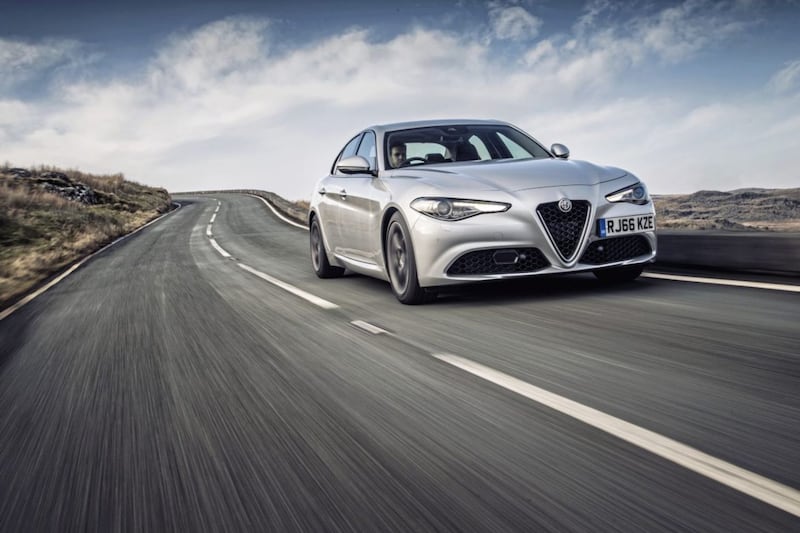
Alfa Romeo Giulia Speciale
Price: £35,515
Engine and transmission: 2.2-litre four-cylinder diesel turbo, rear-wheel-drive, eight-speed automatic gearbox; 178bhp, 332lb.ft
Performance: Top speed 143mpg, 0-62mph in 7.1 seconds
Fuel consumption and CO2: 67.3mpg (EU combined), 109g/km
Car tax: £140 annually
Benefit in kind: 23 per cent
Euro Ncap safety rating: Five stars (98/81/69/60), 2016
